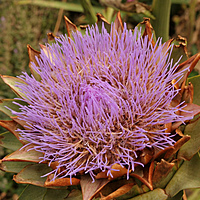Perennial vegetables
You don’t need me to tell you that growing your own vegetables is very trendy at the moment as well as a good idea. My son had a balcony in his small flat groaning under the weight of potatoes, tomatoes, peppers, herbs and strawberries last year. I have to admit, he put me to shame as growing things to eat is not really my passion, unless it’s in the form of a lovely old fruit tree I can grow a rose or clematis up. It seems a lot of hard work and, unlike perennials, bulbs, shrubs and trees, at the end of the growing season, you have to start all over again. You also have to try and remember your crop rotation, when to sow the seeds and plant them out and which particular nasty insect or animal to guard against. (I know I will get taken to task now by you keen allotment holders!).
So I’ve found a solution- grow perennial crops, hooray! I have already got a Globe Artichoke which looks lovely as well as tasting good. Rhubarb, redcurrants, alpine strawberries and raspberries are already in place. So what else? Asparagus may be worth a go, if I can get time and energy to prepare a weed free bed for them. Now is a good time, but they will want a raised bed on our heavy clay as they like good drainage. You can by year old roots or crown now and plant about 60 cm apart, remember to give them an annual mulch. A well looked after asparagus bed will keep going for years and years. My rhubarb is looking very sad, I had better give that a good mulch as well. Other perennial crops are seakale, Jerusalem artichokes, sea beet or perpetual spinach and even wild rocket can be established as a perennial. Bear in mind that ‘perennial’ does not mean immortal – you will need to feed and replant from time to time to keep your plants cropping well and they will still need weeding.
